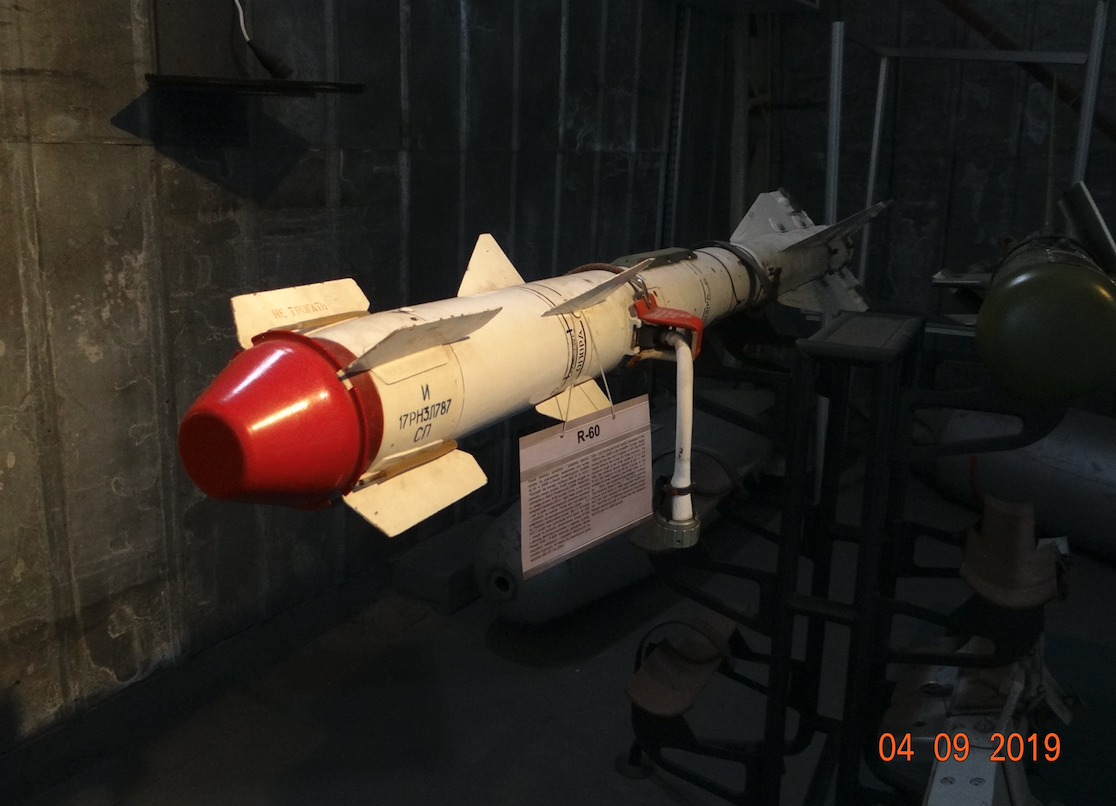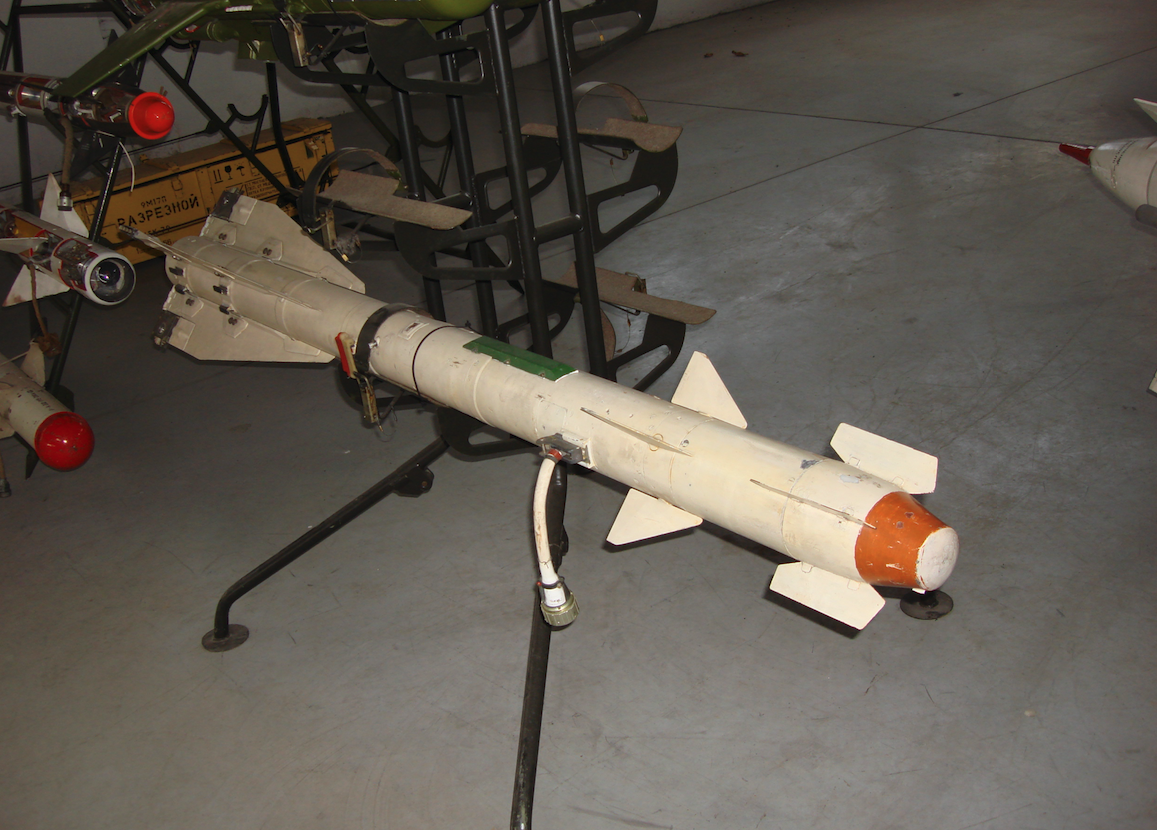Kraków 2020-10-13
R-60 guided missile
R-60 guided missile. 1974 year.
The R-60 missile is a Soviet air-to-air guided missile designed for short-range combat. The projectile is thermally guided, i.e. at the source of infrared radiation.
Work on the R-60 missile was started in 1965 in the design office of NPO "Mołnia" (НПО "Молния"). The designers focused on improving the technical parameters of the R-3S and R-13 missiles. The missile was supposed to make turns with greater overload. There was to be increased resistance to natural disturbances.
The first R-60 missiles in the air were launched in 1971 with the use of MiG-21 SMT and MiG-23 M. The first version of the R-60 missile was designated as R-60T and entered service in 1974. The first carrier was the MiG-23 plane. Then the R-60 missile hit the armament of the following aircraft: Su-15, Su-17, Su-20, Su-22, Jak-38, MiG-29.
Construction of the R-60 missile.
The R-60 missile is one of the smallest air-to-air class missiles in the world. The bullet weight is only 43.5 kg. This allows the projectile to perform turns with greater overload. The warhead weighs only 2.9 kg, then 3.7 kg. A radar fuse was used. The effective range of the projectile is 300 m to 4,000 m, although the maximum range is 10,000 m when attacking targets at high altitudes.
The infrared missile detector is cooled with liquid nitrogen gas in order to prevent blinding the systems by reflections from the water and land surfaces. The detector’s scanning angle is 60 degrees. Aiming can be performed using the pilot’s helmet sight. The missile can be fired from an aircraft maneuvering with an overload of up to +7 g, and the missile itself is characterized by the possibility of obtaining overloads of up to +35 g, which allows it to fight maneuvering targets with overload of up to + 8-9 g. The homing warhead is sensitive enough, to attack the target also from the front hemisphere, albeit only under favorable conditions.
The R-60 missile has a duck aerodynamic design, a cross-type tail in the front and a cross-type wing in the back. The R-60 missile consists of five main compartments: The first front part contains the OGS-60 Komar thermal homing head. TGS is designed to display the target against the background and to provide the interception signal. The maximum angle at which a target can be indicated from the deck of the vector is 12 degrees. The second part includes a control mechanism. The third part is a fragmentation-cutting warhead with a warhead weight of 2.9 kg. The R-60M missile received uranium rods, the weight of the warhead is 3.5 kg. The fourth part is the next control compartment which consists of the SUR-69 control block. The fifth section is the engine compartment with the PRD-259 solid propellant engine. The engine runtime is 3-5 seconds.
R-60 missile T-T data:
Production since 1973. Put into service in 1974. Length 2.09 m. Diameter 0.12 m. Wingspan 0.39 m. Weight 43.5 kg. Top speed of 2.7 Ma (3 304 km / h). High-fragmentation warhead weight 2.9 kg.
R-60M missile. 1977 year.
From 1977, work on improving the missile was carried out. In 1982, the improved R-60M missile was put into service. It was equipped with a cooled infrared detector with greater sensitivity and a target tracking angle widened to 40 degrees. It was 12 degrees. The new version of the missile is capable of attacking targets from an even shorter distance of 200 meters (it was 300 m) and has a laser proximity fuse (it was radio).
The following planes were equipped with R-60M missiles: MiG-25, MiG-31, MiG-23, MiG-27, MiG-29, Su-22, Su-27, Su-24, Su-25.
R-60MK missile.
The R-60MK missile is an export version of the R-60M missile. The missile can be guided with a helmet-mounted sight, used, among others, in MiG-29 aircraft.
R-60 missile in Poland. 1979 year.
The R-60 missiles are used in Poland by the following aircraft: MiG-21 bis, MiG-23, MiG-29 and Su-22. The R-60 missiles arrived in Poland together with MiG-23 planes in 1979.
Written by Karol Placha Hetman



